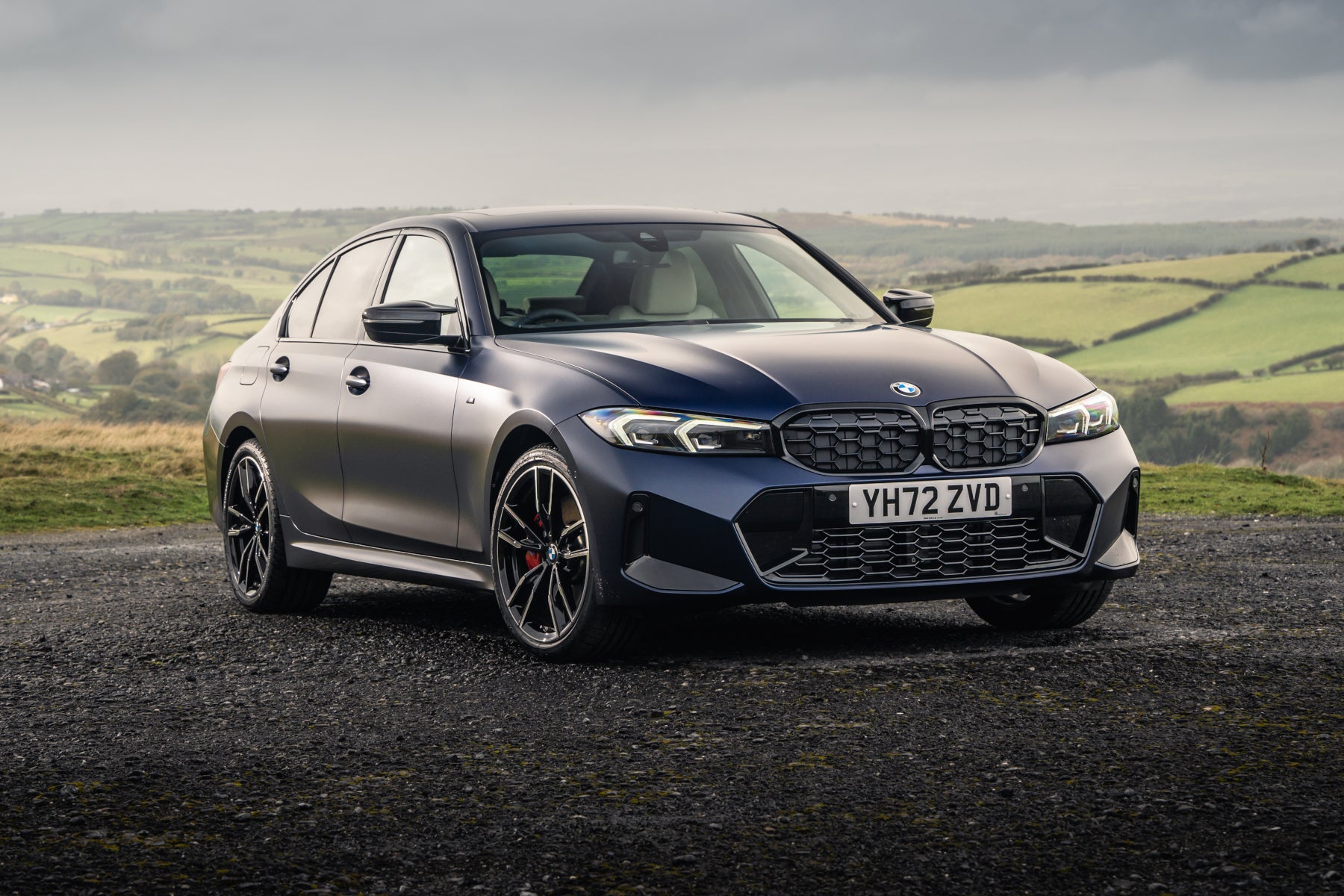BMW 3 Series Review 2025: Price, specs & boot space
Written by Andrew Brady
Quick overview
Pros
- Exceptional to drive
- Latest infotainment is slick and easy to operate
- High quality cabin
Cons
- Not as practical as certain hatchback or SUV alternatives
- Some basic equipment is an expensive option
- M Sport suspension is quite firm
Overall verdict on the BMW 3 Series
"The updated BMW 3 Series remains the default premium sporting saloon and a seriously compelling all-rounder. Fresh technology means the recently updated model is more complete than ever and retains that fun-to-drive element that rivals just can't quite match. Our 2024 BMW 3 Series review has the full lowdown."
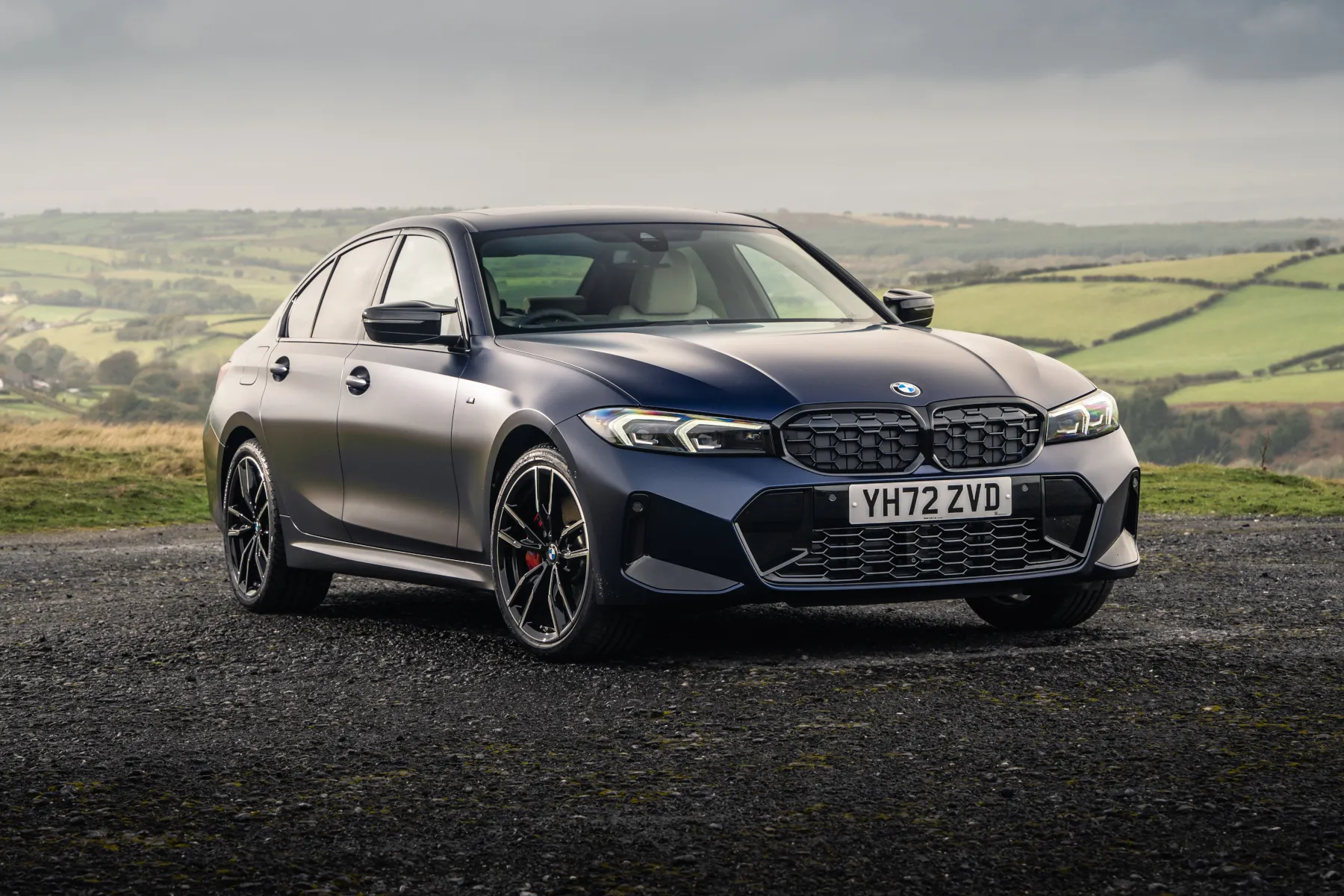
The BMW 3 Series is now in its seventh generation and is facing strong competition from all corners. Previously it found itself rivalling closely comparable posh saloons like the venerable Mercedes C-Class and Audi A4, plus the great-driving Jaguar XE. But the market has changed hugely in recent years.
In 2024, the 3 Series also has to tempt buyers away from similarly sized and priced electric alternatives like the Tesla Model 3 and Polestar 2. And let's not forget the vast swathe of premium SUVs that have become the default choice for many. But recent updates mean the BMW 3 Series remains one of the most desirable executive cars on the market, while an engine to suit almost every buyer means it puts up a good argument that it's still relevant today.
Let's start with the interior, as that's where the latest BMW 3 Series has evolved the most since it first went on sale in 2018. It's always been perfectly finished - every material an example of why the 3 Series costs more than a Skoda Superb to buy - while the thick-rimmed steering wheel and supportive seats are conducive to many hours on the road, whether that's sitting on the motorway or tackling back roads.
Some car manufacturers are a little too keen to embrace minimalism for our liking, but BMW has always struck the right balance between aesthetics and an easy-to-use infotainment system. The BMW 3 Series has an impressive curved media display, similar to that in the BMW iX and i4, which makes the latest 3 Series feel totally up-to-date inside, but not at the expense of user-friendliness bar one detail (more on that in a bit). It looks ultra modern and, impressively, is standard across the range. BMW's brilliant rotary iDrive controller remains, too, as does the brand's intelligent voice-activated personal assistant.
It's easy to get comfortable in the BMW 3 Series, although family buyers might want to look at the BMW 3 Series Touring instead for its slightly bigger boot (or an SUV like the BMW X3 or Hyundai Tucson). There isn't any change in terms of practicality between the pre-facelift and facelifted 3 Series; aside from the infotainment, the only real difference you'll notice is the move to a toggle switch for the automatic gearbox selector.
Although you can't get an electric BMW 3 Series (the BMW i4 is the closest available for now), you can get it with an engine to suit almost every taste: provided you're buying used, that is, because later on in the car's life, the engine range was pared right back to just a handful of petrol and plug-in hybrid options. Diesel might be a dirty word these days, but the BMW 320d is a superb all-rounder, combining a refined (and actually very efficient) engine with low running costs. The BMW M340d xDrive, meanwhile, uses one of the best diesel engines we've ever sampled in the form of a 340PS 3.0-litre straight-six: it's a true 'have your cake and eat it' kind of car.
Petrol models range from the slightly underwhelming (and now dropped from the range) 318i to the M3-chasing BMW M340i. We rate the BMW 320i as one of the best all-rounders you can buy, while there's a distinct appeal to the smooth and subtle 330i (perhaps the connoisseur's choice of the line-up). Hybrid power comes in the form of the BMW 330e plug-in hybrid, which combines a 2.0-litre petrol engine with an electric motor, providing an electric-only range of up to 38 miles. Ideal for scooting around town (or, more importantly for many, paying minimal company car tax).
There isn't a bad BMW 3 Series to drive. Standard cars are rear-wheel drive which, combined with superb steering, means the 3 Series feels agile and fun. You can also get xDrive all-wheel drive, which does little to dampen the enthusiasm but does provide a little extra reassurance in slippery conditions. All BMW 3 Series models now come with an excellent eight-speed automatic gearbox as standard, which is equally as impressive.
BMW has been honing its popular 3 Series for more than 40 years and it's a shame the market is now moving (at pace) away from the premium three-box saloon. Recent updates aren't particularly dramatic (and, to that end, we reckon an older example of the latest 3 Series is equally appealing) but the latest infotainment ensures it still looks modern in a tech-heavy world. Combine that with a high-quality cabin and BMW's usual excellent driving dynamics, and the 3 Series remains an extremely desirable choice.
Looking for a used car for sale? We've got 100s of BMW Approved Used Cars for Sale for you to choose from, including a wide range of BMW 3 series models for sale. If you're looking for the older version, you need our used BMW 3 Series (2012-2018) review.
Is the BMW 3 Series right for you?
The BMW 3 Series is clearly right for so many people, or else why would you see so many on the road?
Traditionally a big fleet seller, it’s always had strong residual values, and BMW has worked to keep running costs palatable with low emissions and excellent fuel economy. A 320d is the answer to most motorists’ questions, while a 330e does all that while saving your environmental conscience: it can complete short journeys using electric power alone.
But it also works for private buyers as the main family car. If you need more space, the BMW 3 Series Touring is equally as good in estate form.
The only people the BMW 3 Series isn't right for is those who want to stand out, because you'd be hard pushed to go for even a short drive and not see several of them. If that's what matters, you'd be better off trying one of its less popular rivals instead: and in the coming years it'll become rarer anyway as SUVs dominate the sales charts.
What other cars are similar to the BMW 3 Series?
The BMW 3 Series is joined by the Audi A4 and Mercedes-Benz C-Class in the posh family car class. They're its main competitors and sell in similar numbers. However, there are plenty of alternative competitors that maybe aren't quite as good all-rounders, but still hold plenty of appeal.
There's the stylish and great to drive Jaguar XE and Alfa Romeo Giulia, the comfortable and classy Volvo S60 and the left-field Genesis G70. None are quite as talented in every area as the BMW but all have their own appeal.
Mainstream brand competitors include the spacious and classy Volkswagen Passat and rakish Arteon, while the Mazda 6 might tempt you. Likewise, if boot and passenger space is of upmost importance, the Skoda Superb dwarfs the 3 Series on interior space.
Of course, in this day and age, you might also be considering going electric. The BMW i4 is a good alternative to the 3 Series and one of the best electric cars going. We'd also suggest looking at the Tesla Model 3, Polestar 2 and Kia EV6.
Comfort and design: BMW 3 Series interior
"BMW has always excelled at providing a good driving environment, and so it proves with its huge-selling 3 Series. The design will be familiar to anyone who’s had a 3 Series before: the driver-focused cockpit remains, but with a more modern spin."
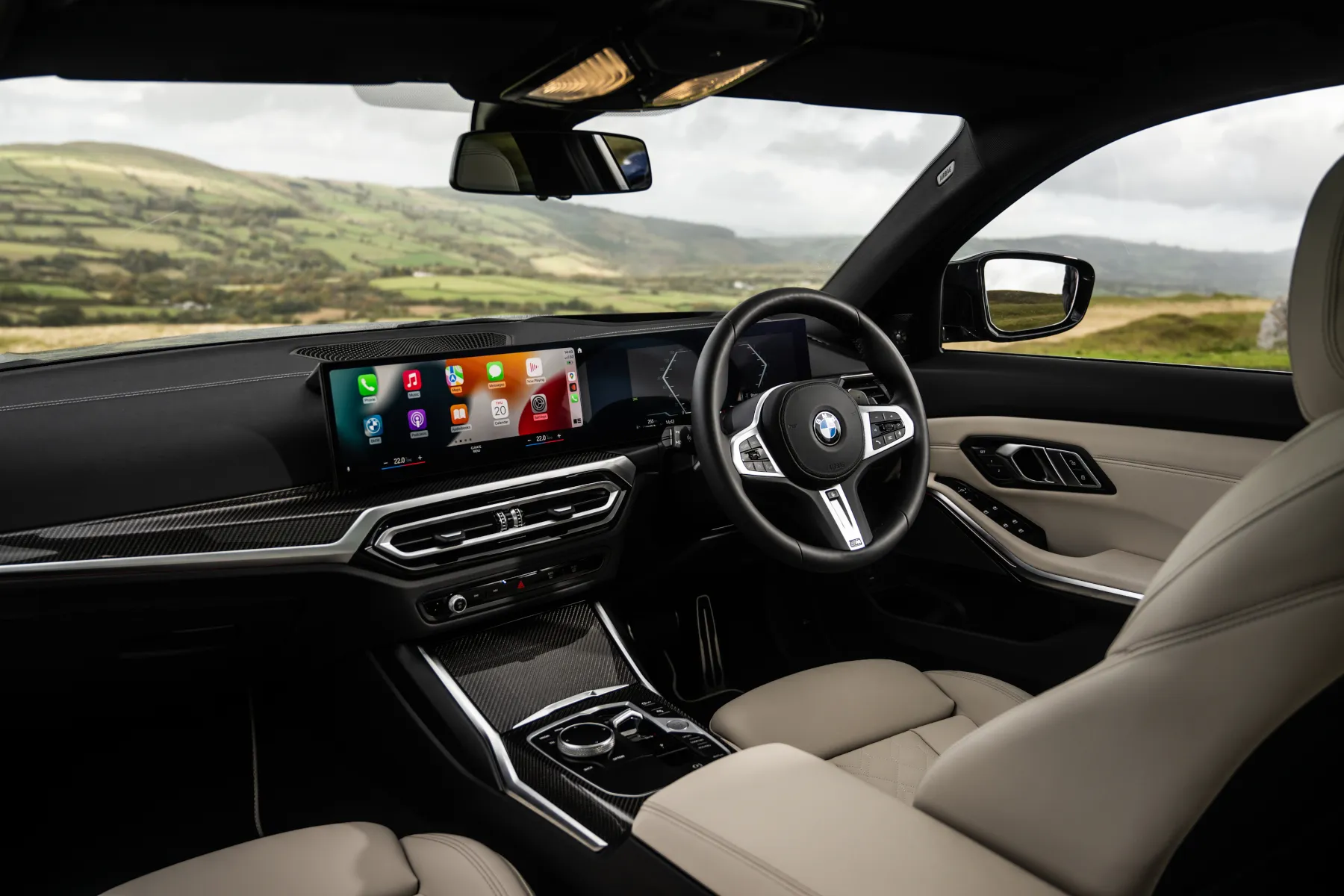
The latest BMW 3 Series has a much more classy and high-tech cabin than all of its predecessors, but BMW has still got the basics right.
The driving position is low and sporty, the seats are supportive and comfortable, and, from Sport trim upwards, they’re all upholstered in leather. The SE Plus Package (available on now-defunct SE models) adds black leather seats - which are heated for both the driver and passenger – and a larger fuel tank to help you make the most of that comfort.
Forward visibility is excellent for a modern car, although being a saloon, it's a little difficult trying to park it just by looking through the rear-view mirror. Happily, you get front- and rear parking sensors, a reversing camera and a partial self-parking system as standard, while a full 360-degree camera system is on the options list.
All 3 Series models come with ambient lighting and automatic air conditioning with three-zone control. Sport models add more contoured sports seats, which embrace you that little bit tighter than the SE's.
The Comfort Package, gives you a heated steering wheel, automatic tailgate opening, extended storage and a Comfort Access with smart opener, so you can open the car handsfree with your phone. Other packages worth optioning include the Premium Package, which adds electric seat adjustment and lumbar support for the front seats with a memory function for the driver’s seat, and an electric glass sunroof. Lumbar support is available individually.
Space is better than in the previous-generation 3 Series because it's a larger car all-round. While it's not quite as commodious as the 5 Series, it's now a genuine alternative to mainstream family cars for those who want something that feels a bit more special.
While it's not quite as glamorous inside as the latest Mercedes C-Class, it's a match for the Audi A4 on tech and fit-and-finish. That technology is comprehensive, particularly with the latest infotainment system and digital dials. But BMW has kept the rotary click wheel as well as a touchscreen, and that choice of interfaces means it's among the easiest systems to use of its type. Indeed, our only complaint is that the physical stack for the climate control has gone: you'll either have to use voice control or prod the touchscreen to adjust the temperature.
Quality and finish
The BMW 3 Series is a premium model, with an upmarket badge, and the posh interior largely reflects this with high-quality soft-touch plastics and posh metal trim pieces. The infotainment and instrument screens also have high-definition displays with sharp colours.
It feels a cut above mainstream saloons and estates such as the VW Passat. Even when you start to poke and prod in the lower reaches of the cabin, you'd be very hard pushed to find anything that doesn't feel suitably premium. It's the same in the rear, too. Perhaps the Audi A4 feels ever so slightly more granite-hewn, but it's a close-run thing.
Infotainment: Touchscreen, USB, nav and stereo in the BMW 3 Series
There was a big change to the BMW 3 Series in 2022, and that was the introduction of the brand's eighth-generation infotainment system. It now gets the same curved display as the BMW iX, combining a 12.3-inch digital instrument cluster with a large 14.9-inch central infotainment screen. It's more minimalist than before, with things like the climate control now lumped in with the navigation (rather than having a separate bank of buttons below the screen).
The latter point may be of mild frustration to some because it was so easy to twirl a knob or prod a switch to adjust the fan speed or temperature, especially while driving. Happily it's not a deal-breaker, because there's a strip at the bottom of the screen that always remain dedicated to climate settings. You also get voice control, which responds pretty well to commands like "turn down the temperature" or "turn my seat heater on".
You still get a rotary iDrive controller conveniently located on the centre console. This works brilliantly, allowing you to peruse the infotainment one-handedly without having to lean forward and prod the touchscreen display. Unfortunately (depending on your point of view), you can no longer get Gesture Control in the 3 Series. On earlier models, this allowed you to twiddle your figure vaguely in the direction of the nav to adjust the volume or skip a track. Some liked it, but many (including BMW customers) didn't. That's why it was quietly dropped.
From the car's 2019 launch, all models came with the BMW Live Cockpit Plus, which includes an 8.8-inch touch display, BMW navigation, BMW Concierge services, real time traffic information, remote services – so you can do things like check the car's remaining range using an app on your phone – and DAB radio. All also come with BMW Online Services, that includes BMW Apps, BMW Connected and various other connected features.
M Sport models upwards gain the Connected Package Professional, adding connected navigation that can route around congestion and search for parking. M Sport models and above also get BMW's Live Cockpit Professional, with sees the main screen grow to 10.25 inches, with the conventional instruments also replaced by an additional 12.3-inch screen. Towards the end of 2020, BMW upgraded the standard offering and most models came with the larger infotainment screen.
As for Apple CarPlay and Android Auto smartphone connectivity? Well, the former has always been available, but BMW initially tried to charge a subscription fee for it. That was dropped entirely in 2019, meaning every 3 Series now gets wireless CarPlay as standard. Similarly, Android Auto wasn't offered at all before the end of 2020, when BMW fitted it to new models and updated existing models to equip them with it.
Space and practicality: BMW 3 Series boot space
The latest BMW 3 Series is larger than the model it replaced. In terms of dimensions it's 4713mm long, 1827mm wide and 1435mm tall, which is around 90mm longer and 14mm wider than the old car.
That's allowed the company to free up a load of extra rear-seat room. Tall adults will have plenty of room, even if you and your front-seat passenger are also tall: there's more than enough foot- and knee room, and even six-footers won't feel short-changed on headroom.
Okay, so your middle-seat passenger gets a raw deal because the large transmission tunnel that runs down the middle of the floor eats up the space for their feet, and they'll feel squeezed for elbow room. That said, it's no more cramped than in any of the BMW's competitors (in fact, it's better than most) and the seat itself is reasonably compliant, and not overly firm like you get in some cars.
Oddment storage throughout is decent, with good-sized door bins and glovebox, with the Comfort Package adding Extended Storage including a compartment on the driver’s side of the dashboard, seatback nets, twin USB charging points in the rear, storage hooks, a 12-volt socket in the boot as well as a handsfree, powered bootlid.
Open that boot and the space is good, with a quoted volume of 480 litres for all conventionally powered models, dropping to 375 litres in the 330e model due to the battery pack being fitted under the boot floor. The 330e also loses the standard 40/20/40 split fold seating, which increases the luggage space and allows for longer through loads.
The 3 Series’ boot is usefully accessible, with a wide opening helping you to get luggage in. If you need more practicality from your 3 Series, then check out the Touring model. Two Isofix mounts for child seats come as standard and are positioned on the two outer rear seats.
Handling and ride quality: What is the BMW 3 Series like to drive?
"The front engine, rear-wheel drive layout isn’t unique to BMW. Mercedes-Benz and Jaguar do the same, but BMW has always been the best at exploiting the most engaging drive from this setup, by offering a superb balance and direct steering. Any 3 Series is a joy to drive down a twisty road because of this."
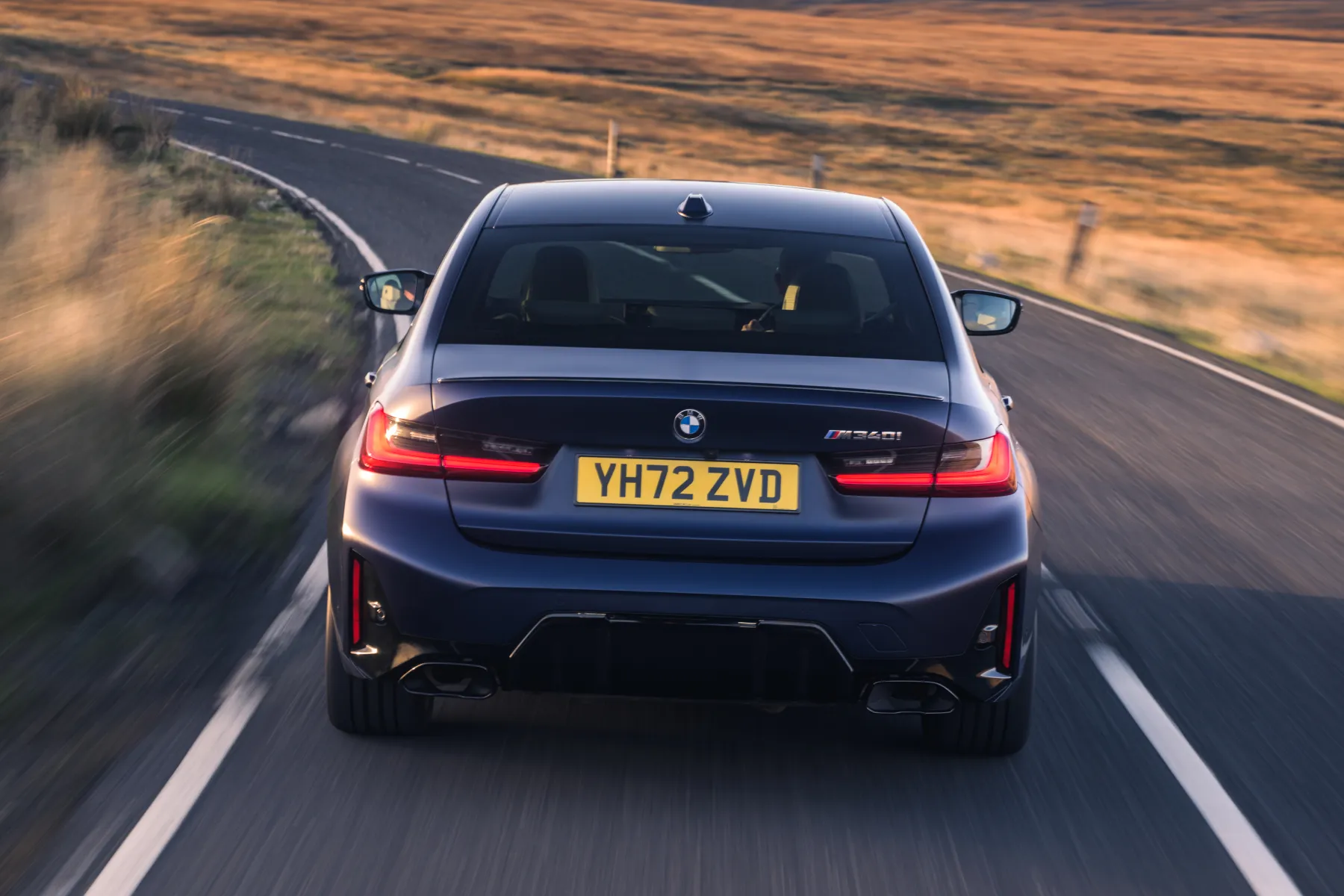
For decades the BMW 3 Series has set the class standard in terms of its engaging driving experience. Some rivals have beaten it for out-and-out comfort, but few have come close on handling terms.
That continues with the latest model. The steering is direct and well-weighted, and the 3 Series feels light and nimble with responsive turn-in, good grip levels and fine balance. Only the Jaguar XE and Alfa Romeo Giulia can compete when it comes to driving fun.
That’s true in its standard SE or Sport guise, on the smallest of wheels and regular (not run-flat) tyres, but the larger wheels fitted to high-end models do spoil the supple ride a little, meaning a well-specced Mercedes C-Class is more comfortable. That said, BMW will swap the firmer M Sport suspension out for the standard set up free of charge if you want.
Pick the M Sport Plus package on M Sport models, and you get adaptive dampers, which offer the best of both worlds; taut control when you want it, but with the ability to have a supple ride for more comfort. XDrive four-wheel drive is offered across a number of models, but it's not really necessary, unless you frequently drive on slippery roads or want additional stability when towing.
The BMW M3 is a more capable, hard-charging sports saloon, with tauter suspension and lots of clever drive modes including (on the xDrive version) the ability to switch from two-wheel drive to four-wheel drive at the touch of a button. There's no doubting it's more exciting than the regular models, but it's hard to really enjoy its full abilities on the road: it's best exploited on a track.
What engines and gearboxes are available on the BMW 3 Series?
Over its lifetime, the BMW 3 Series has offered a strong range of petrol, diesel and hybrid engines. Only the very smallest engines are a tad underwhelming, but otherwise all are excellent.
The base petrol originally offered in the latest 3 Series was a 156PS 2.0-litre turbocharged four-cylinder badged the 318i, while the base 318d diesel also used a 2.0-litre turbo four-cylinder making 150PS. While both are perfectly adequate and do the job that's expected of them, they don't offer the kind of performance to allow you to really enjoy the excellent driving dynamics of the 3 Series.
On the petrol side, then, we'd step up to the 184PS version of the same engine, badged 320i (now the entry-level car), or go further with the 288PS model badged 330i. The latter in particular offers strong performance, but the four-cylinder noise that accompanies them isn't particularly inspiring. The 320i achieves 0-62mph in 7.1 seconds (7.6 with xDrive) and the 330i manages it in 5.8 seconds.
If you want a six-cylinder engine with a creamy growl, you’ll need the range-topping M340i, which has a twin-turbocharged 3.0-litre with 374PS. It manages 0-62mph in just 4.4 seconds, some four seconds faster than the 318i, and makes a good noise in the process. Its on-paper efficiency isn't all that great, but it'll actually be reasonably frugal if you're gentle with the throttle.
The M340i is so fast and capable that even enthusiasts would struggle to justify the latest BMW M3. It does put out a monstrous 510PS courtesy of an even more highly tuned 3.0-litre straight-six, though, and manages 0-62mph in just 3.9 seconds. Better still, for the first time the M3 is available in xDrive form, taking the 0-62mph time down to an immense 3.5 seconds and offering greater bad-weather security.
Diesels have been core to the model’s success in the past, and there’s plenty of choice, here, too. As we said, we'd step up from the 318d to the 190PS 320d (indeed, the 2022 facelift saw the former dropped from the range), which offers effortless performance and is even quite good fun. 0-62mph comes up in a brisk 6.8 seconds.
Again, though, you might be swayed by the pace and smoothness of the six-cylinders. The 330d gets a 3.0-litre turbodiesel with 286PS and the diesel line-up is topped out by the 340PS 340d – both have six-cylinders that make them more cultured than the lower-ranking diesels. They even make a pretty good noise, while both are pretty rapid. The 340d manages 62mph in just 4.6 seconds, the 330d does the same in 5.1 seconds.
While if you’re conflicted between performance and the environment, the 292PS 2.0-litre petrol/electric plug-in hybrid powertrain in the 330e is the perfect compromise, with all-electric propulsion for local trips (up to 38 miles), and a four-cylinder turbocharged petrol engine for longer journeys.
Initially, the only version of the latest 3 Series available with a manual gearbox was the entry-level 318i and 318d, and all the rest had an eight-speed automatic gearbox that's one of the slickest auto transmissions available. Now, however, most of the engines have been dropped from the line-up. If you're buying brand new, then only the 320i, 330e and M340i remain.
Refinement and noise levels
All versions of the BMW 3 Series are quiet on the move. The four-cylinder diesels (that's those badged 318d or 320d) are a little bit more vocal – very marginally so - than their smooth petrol alternatives, but not so much that it’s an issue.
The six-cylinder engines (whether it's petrol or diesel) are all superbly refined when you want them to be, and make a nice noise when you want that, too.
All models come with acoustic glass, which helps dampen down wind noise, and the effects are obvious on a cruise, making the 3 Series a hushed, pleasing place to while away motorway miles.
The 330e increases the refinement levels further thanks to its ability to run on electricity alone, adding to the serenity, and underlining the 3 Series’ good overall refinement.
Road noise is largely well contained, but nastier combed concrete surfaces and expansion joints do see some road roar making it through to the interior. It's more notable on models with larger wheels and run-flat tyres, as well as those on the M Sport suspension.
Safety equipment: How safe is the BMW 3 Series
BMW’s Active Guard Plus comes as standard on all BMW 3 Series, so you get safety features such as Front Collision warning with brake intervention, Lane Departure Warning and Speed Limit Assist. There’s Parking Assistant, too, which includes a rear-view parking camera and parking sensors front and rear to help you avoid low-speed dings.
All models also get traction and stability control (unsurprisingly), while should an accident be unavoidable, there’s front side-, chest-, knee-, pelvis- and curtain- airbags, and a pair of ISOFIX child seat mountings on the rear outer seats.
For autonomous driver assistance, you need to tick the options boxes, with Driving Assistant Professional adding Active Cruise Control, Automatic Speed Limit Assist, Crossing Traffic Warning Front, Crossroads Warning and City Braking Function, Evasion Aid, Lane Keeping Assistant with Active side collision protection and Steering and Lane Control Assistant. This suite of advanced aids is only offered on M Sport models and upwards. Fitted, it means the BMW can essentially drive itself in certain situations.
Auto dipping headlights and BMW's powerful laser headlights are also optional across the range.
In 2019, Euro NCAP awarded the BMW 3 Series a full five stars for crash safety. Its adult occupant protection score of 97% was particularly impressive, while other scores across the board are very strong.
Maximum EV range
The BMW 3 Series 330e offers a combined output of 292PS from its petrol/electric plug-in hybrid powertrain, with the battery and electric motor able to offer a 38-mile range on electric power alone in perfect test conditions. Expect a real-world figure in the early 30s, then. It’ll drive up to 87mph in electric-only mode, too, and using the sat nav allows you to maximise range. It's also possible to hold a percentage of battery charge for destination electric-only use.
MPG and fuel costs: What does the BMW 3 Series cost to run?
"Buy a BMW 3 Series with the right engine to suit your needs and it'll be a very efficient choice. The diesel engines have mild-hybrid power, while there's a plug-in hybrid that's capable of running around town without the engine kicking in at all."
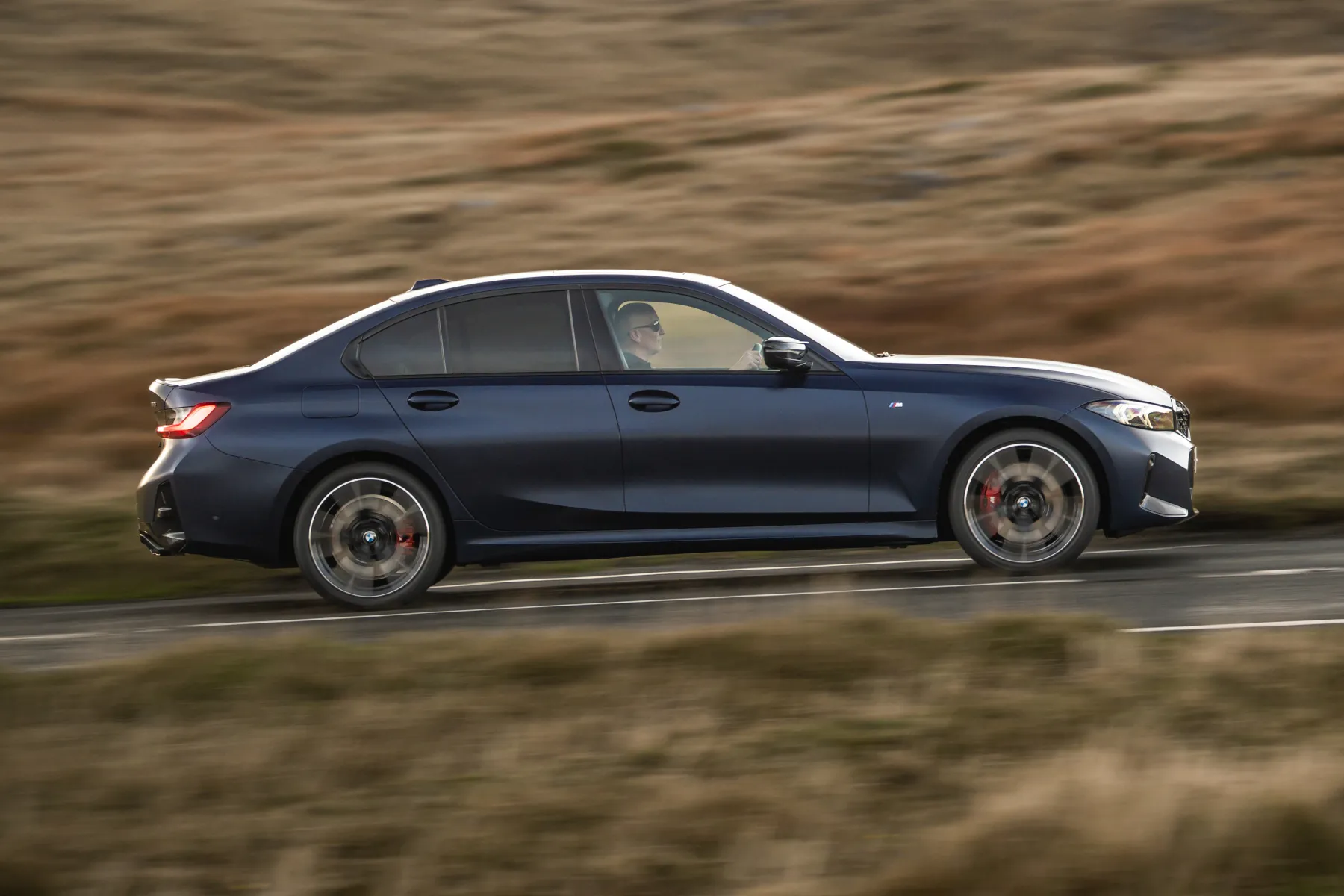
On paper, it's the plug-in hybrid BMW 330e that'll return the best fuel economy. It's worth taking its 217.3mpg figure with a pinch of salt, though: it'll only return anywhere near to this if you keep the battery topped up and barely ever drive beyond its 38-mile electric range.
The diesels will be a more economical choice in the real world for the majority of drivers, especially if you're planning to cover a lot of motorway miles. Officially, the BMW 320d Sport returns up to 58.9mpg, while the M Sport manages 57.6mpg. This drops slightly if you buy an xDrive all-wheel-drive model: down to 54.3mpg for both Sport and M Sport models. With its extra performance, the BMW M340d xDrive returns up to 47.1mpg in official WLTP tests.
While petrol models are typically thirstier than hybrid or diesel cars, they're still relatively frugal in the BMW 3 Series. Or at least, the entry-level four-cylinder engine used in the BMW 320i is, capable of returning up to 44.1mpg in Sport trim. This drops to 41.5mpg if you buy an xDrive model, while the more potent 330i manages up to 43.5mpg. The flagship BMW M340i xDrive returns up to 36.2mpg combined.
Must have that BMW M3? You'll be paying for it at the pumps with 28.8mpg combined, although the penalty for the xDrive model is a mere 0.8mpg.
How reliable is the BMW 3 Series?
BMW finished 12th out of 29 carmakers in the latest HonestJohn.co.uk Satisfaction Index, just ahead of the industry average and well ahead of main rivals Audi and Mercedes.
The news wasn't so good for the 3 Series, specifically, though. The car was named and shamed on the list of the ten least reliable cars in the entire study, albeit in 10th place. That's of some concern whether you're buying new or used. If the latter, insist on an impeccable service history.
Insurance groups and costs
The less-potent BMW 3 Series models (including the petrol 320i and diesel 320d) have been placed in insurance groups 29 to 31. The powerful BMW M340i and M340d will be more expensive to insure, placed in groups 39 and 42, respectively.
As usual, the actual price you'll pay to insure a BMW 3 Series varies on a wide range of factors, including your annual mileage, where the car's stored overnight, your driving experience and even how long in advance you search for quotes. We'd recommend shopping around for quotes. The BMW 3 Series shouldn't be any more expensive to insure than premium rivals, but it might be prohibitively expensive for young or inexperienced drivers.
VED car tax: What is the annual road tax on a BMW 3 Series?
The 3 Series is taxed at the same flat rate as all petrol and diesel cars build since 2017, and this rate currently stands at £190 per year. Hybrid versions get a discount, but it's only £10 per year.
That's not the full story, though, because any car that costs over £40,000 when brand new gets hit by an additional 'luxury car' surcharge. For a five-year period from years two to six of the car's life, you have to pay an additional sum on top, a sum that currently amounts to £410 per year. This charge also gets passed to subsequent owners, so you can't swerve it by buying used.
So does that affect the 3 Series? Well, yes, very probably. Early cars of a low-end spec were priced below that threshold (although adding a handful of optional extras could easily take them above), but the vast majority were priced above, and all later versions cost more than £40,000. So, it's fairly likely you'll be stung if you buy a 3 Series, but if you want to be sure, perform a quick online search with the registration of any used example you might be considering.
How much should you be paying for a used BMW 3 Series?
"Despite its premium badge and rock-solid desirability, the BMW 3 Series isn't as outrageously expensive as you might think. Yes, it'll cost you more than mainstream rivals, but compared with premium competitors, it's actually pretty tempting."
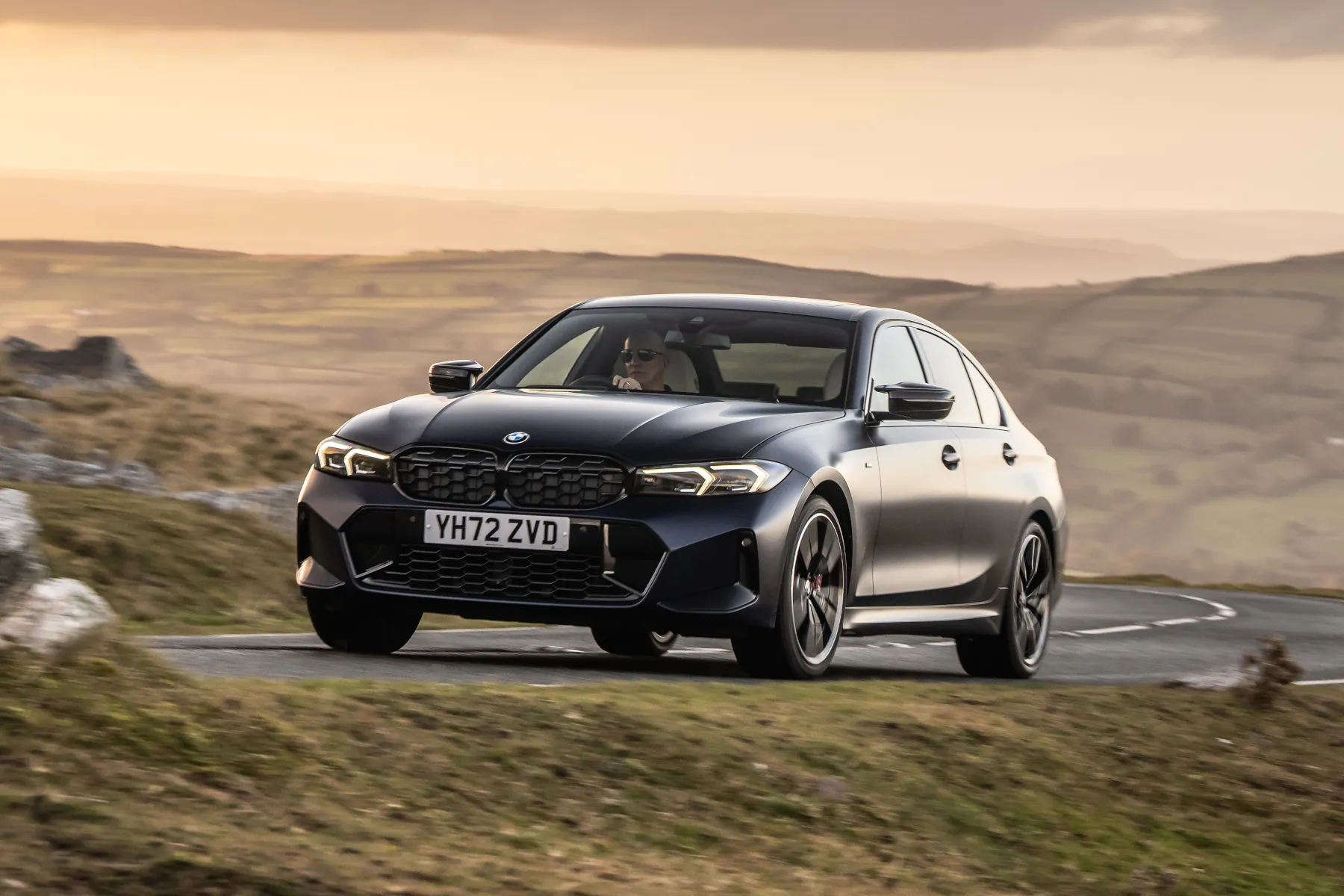
Buy brand new, and prices start at around £40,000. That's partly due to the fact that entry-level engines and trims have been dropped from the range since the car went on sale.
Check out the heycar classifieds, though, and there are some proper bargains to be had. If you're prepared to put up with a punchy mileage of around 85,000 miles or so (that's very common on cars like this), then a budget of £15,000 will be enough to get you a wide choice of four-year-old cars. These include diesels and even the plug-in hybrid version.
For the latest infotainment system, you'll want a facelifted car from 2022 or later (look for a 72-plate at the earliest, and the smoother, non-slotted headlight design). You'll be looking at more like £30,000 for one of these, and it'll most likely be a 330e PHEV with around 20,000 miles under its wheels.
Trim levels and standard equipment
An entry-level SE trim level was initially offered, but that's since been discontinued. Sport trim is now the entry point to the range, and this includes a very decent level of standard kit, including alloy wheels, three-zone climate control, heated front seats, cruise control and all the various infotainment functionality we discussed earlier.
M Sport trim is the most popular, though, and this adds bigger wheels, sportier styling, lowered suspension and part-faux-leather upholstery. If buying the M Sport, we'd urge you to add the M Sport Pro Pack, or find a used example with it fitted. This adds a bunch of goodies, including the adaptive suspension that gives the 3 Series a plush ride to complement its agile handling.
Ask the heycar experts: common questions
Is the BMW 3 Series a good car?
What is the most reliable BMW 3 Series?
Is the BMW 3 Series expensive?
Get our latest advice, news and offers
Keep me updated by email with the latest advice, news and offers from heycar.
By submitting you agree to our privacy policy
